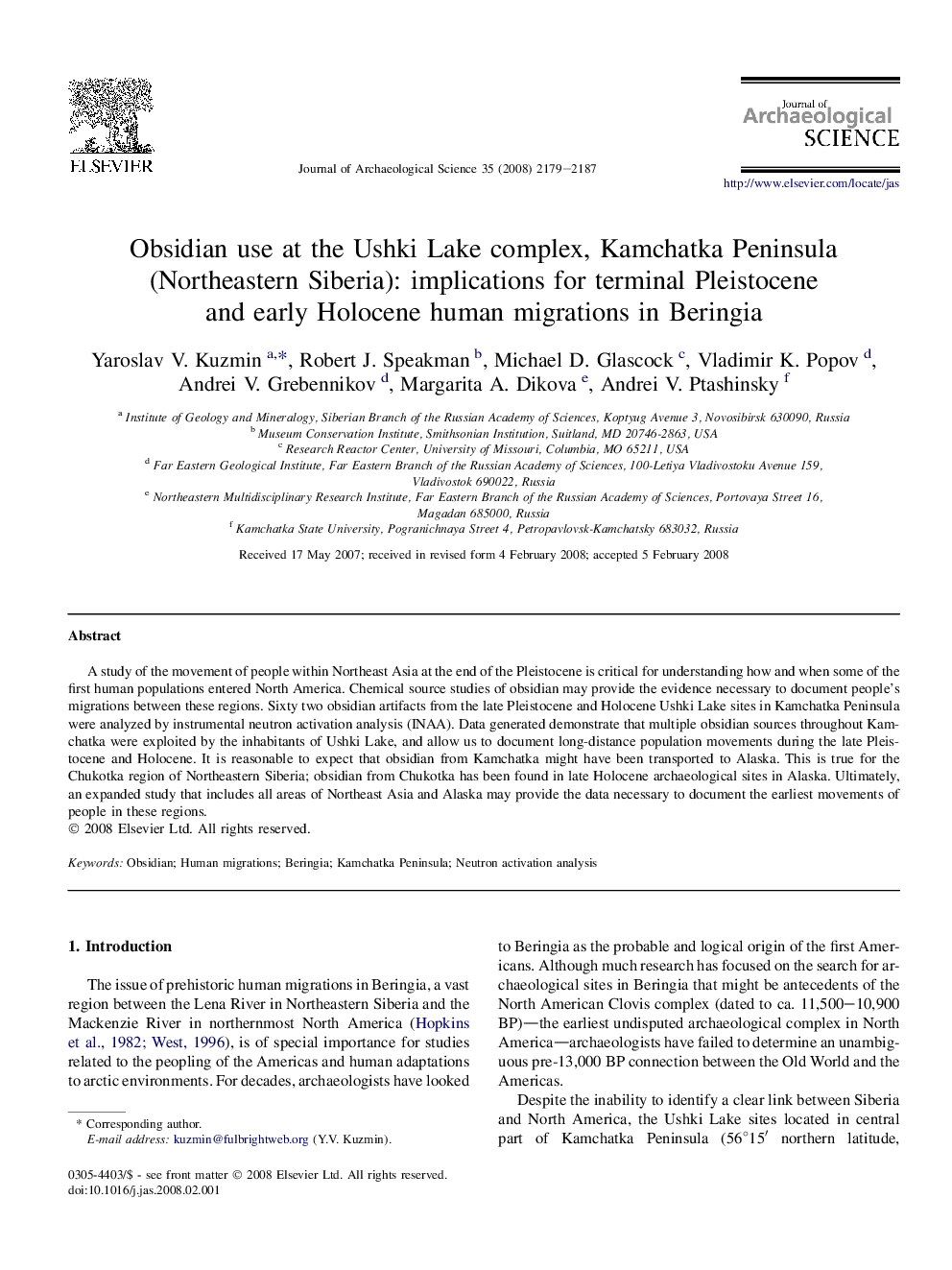| کد مقاله | کد نشریه | سال انتشار | مقاله انگلیسی | نسخه تمام متن |
|---|---|---|---|---|
| 1037067 | 943908 | 2008 | 9 صفحه PDF | دانلود رایگان |

A study of the movement of people within Northeast Asia at the end of the Pleistocene is critical for understanding how and when some of the first human populations entered North America. Chemical source studies of obsidian may provide the evidence necessary to document people's migrations between these regions. Sixty two obsidian artifacts from the late Pleistocene and Holocene Ushki Lake sites in Kamchatka Peninsula were analyzed by instrumental neutron activation analysis (INAA). Data generated demonstrate that multiple obsidian sources throughout Kamchatka were exploited by the inhabitants of Ushki Lake, and allow us to document long-distance population movements during the late Pleistocene and Holocene. It is reasonable to expect that obsidian from Kamchatka might have been transported to Alaska. This is true for the Chukotka region of Northeastern Siberia; obsidian from Chukotka has been found in late Holocene archaeological sites in Alaska. Ultimately, an expanded study that includes all areas of Northeast Asia and Alaska may provide the data necessary to document the earliest movements of people in these regions.
Journal: Journal of Archaeological Science - Volume 35, Issue 8, August 2008, Pages 2179–2187